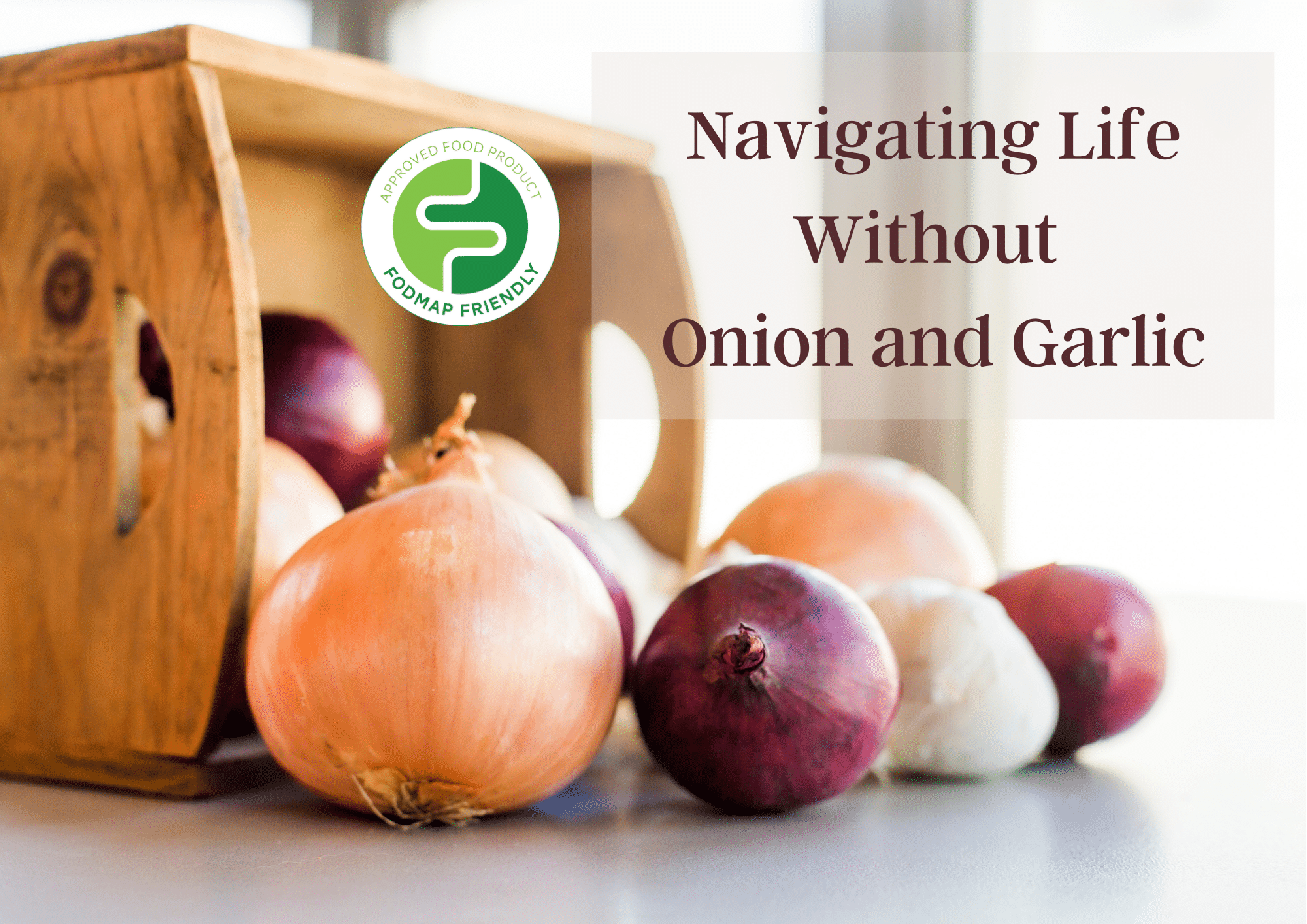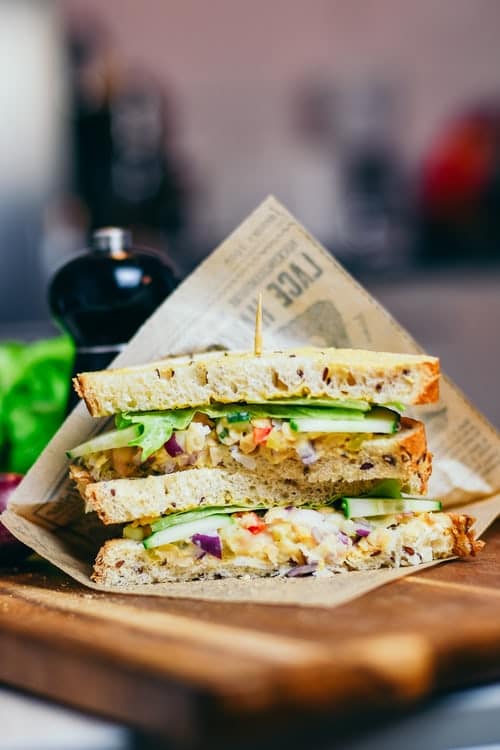Navigating life without onion and garlic
Posted on October 14, 2020
It can be quite disheartening trying to find something to cook for dinner when you’ve been told to avoid onion and garlic for the time being, but every recipe starts off with “heat the oil in a pan, then add the onion and garlic…” Then when trying to dine out, you end up in a ten-minute conversation with your waiter about what is safe for you to eat because not every ingredient is listed on a menu.
In today’s blog, we’ll be providing you with a guide to navigating your way through life without onion and garlic as well as inspiring you with other ways to keep your food exciting and full of flavour.
Why are they so common?
Onion and garlic both belong to the ‘allium’ family which also includes shallots, spring onions, leeks and chives. Onion and garlic are both used in cooking because of their versatility and flavour enhancing properties; as well as their availability and affordability. The flavour enhancing properties make them a great addition to sauces, vegetable or meat dishes, dressings, pies and more. Onions, especially, can be cooked in different ways to bring different elements to a dish – whether it is a fresh, crisp bite of a spring onion as garnish to a curry or a sweet caramelised onion in a burger.
Why you may have already heard of onion and garlic in relation to FODMAPs
Onion and garlic belong to the “O” of FODMAPs, oligosaccharides, in a group called fructans. The fact that onion and garlic are both so widely used in cooking – and so easy to hide in food – makes them well-known high FODMAP foods. While most of the other fructans could be noticed if added to a meal, onion and garlic can easily be diced into a dressing, sautéed into a sauce or just so well disguised that they’re impossible to notice until the food is in your mouth. For this reason, people avoiding fructans or just onion and garlic, often need to have conversations with anyone serving them food about whether or not the food is safe for them to eat.
What happens if someone eats onion or garlic who shouldn’t?
Even if two people who are both intolerant to onion and garlic were to accidentally eat some, it doesn’t mean they will react in the same way or in the same time frame. The symptoms of IBS can include diarrhoea, constipation, painful bloating, excessive wind, abdominal cramps. These symptoms can occur almost instantly after eating food but can also not happen until hours or even days after ingestion.
Where do onion and garlic hide?
Onion and garlic can be found in almost every cuisine and in all kinds of food. Onion and garlic make the base for lots of sauces – this can be the sauce on a pizza base or in a pasta dish, a stir fry sauce, a Mexican salsa or even a dipping sauce like garlic aioli. Onion can often be found in lots of pies, relishes and soups; while garlic can often sneak into dressings, vinaigrettes and roast meats. If you cook often, some of these may seem like fairly obvious places to find onion and garlic.
Some foods, however, are not your usual suspects when you think of onion and garlic. Some of these might include:
– Flavoured crackers, chips and biscuits – many use onion and garlic powder in some of their flavours
– Sushi – there is often onion in the tuna or crab mix for sushi rolls
– Ready-made sandwiches & meals – for example, chicken sandwiches will often have aioli for moisture
– Dips – most store-bought dips, including hummus, will have onion and/or garlic in them!
How do I enhance the flavour my food without onion and garlic?
Now that we’ve established why and how to avoid onion and garlic, let’s look at how we keep food interesting and delicious.
1. Just because onion and garlic may be off the table, it doesn’t mean the rest of the spice cabinet is! This could be a great time to experiment with some new flavours and appreciate more fresh or dried herbs and spices in your cooking. Low FODMAP sauces can also help – things such as truffle oil, fish sauce, miso or dashi to name a few.
2. There are quite a few oil brands that make a garlic-infused olive oil. These are perfect for roasting vegetables and still getting that great garlic taste without the painful side effects. For example: Cobram Estate Garlic Infused Extra Virgin Olive Oil, Garlic & Rosemary Infused Extra Virgin Olive Oil and Roasted Onion Infused Extra Virgin Olive Oil.
3. Spring onions and leeks are not totally off limits! The green tops of both of those are actually low FODMAP and can be used to flavour your cooking.
4. Garlic and onion replacers are available through FreeFOD. They can be added to cooking for flavour; they are FODMAP Friendly certified and free of major allergens. These powders can be used in most ways that onion and garlic can, but it’s important to read the instructions as they are water-soluble, not oil-soluble so try not adding this to oil
5. Asfoetida (also referred to as ‘hing’) is a spice often used in Indian cooking. It has a strong odour when raw, but once cooked into a dish it mellows and a small amount can be a good substitute for onion, especially in vegetable dishes, curries and stews. To take it one step further – try dicing up the end of bok choy and frying with some asafoetida to resemble onion even further.
The take home message
The abundance of onion and garlic in our culinary world means that navigating a life without them can be tricky if you don’t know what to look for. Working with a Dietitian and having a better understanding of where garlic and onion can hide will help with minimising any close calls or accidental slip ups. It’s also just as important to know about how many other low FODMAP options there are, and for you to have the confidence in your ability to season your food and still enjoy it.
Written by Jessica Cheshire (Dietitian)
Reviewed by Kiarra Martindale (Accredited Practising Dietitian)












